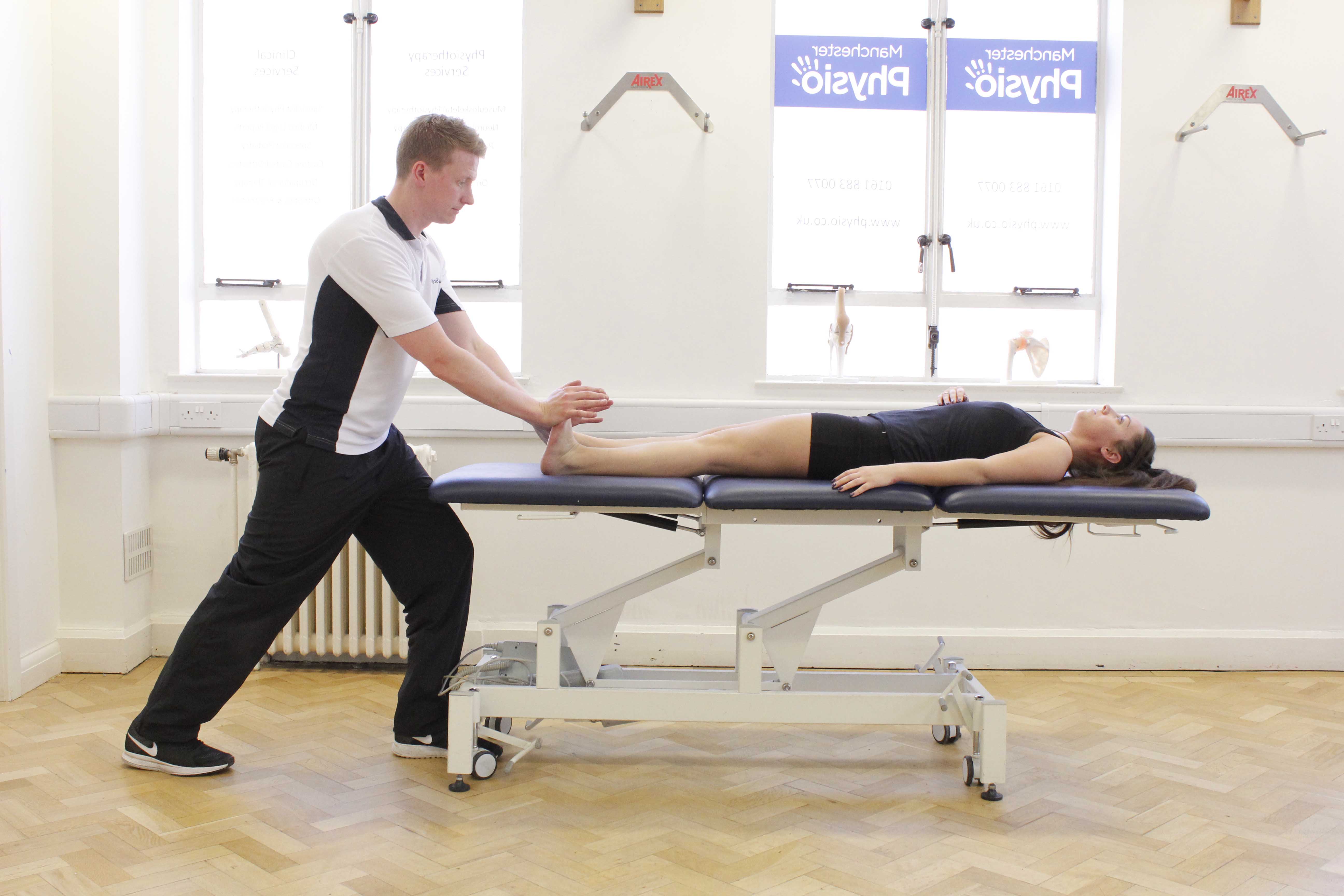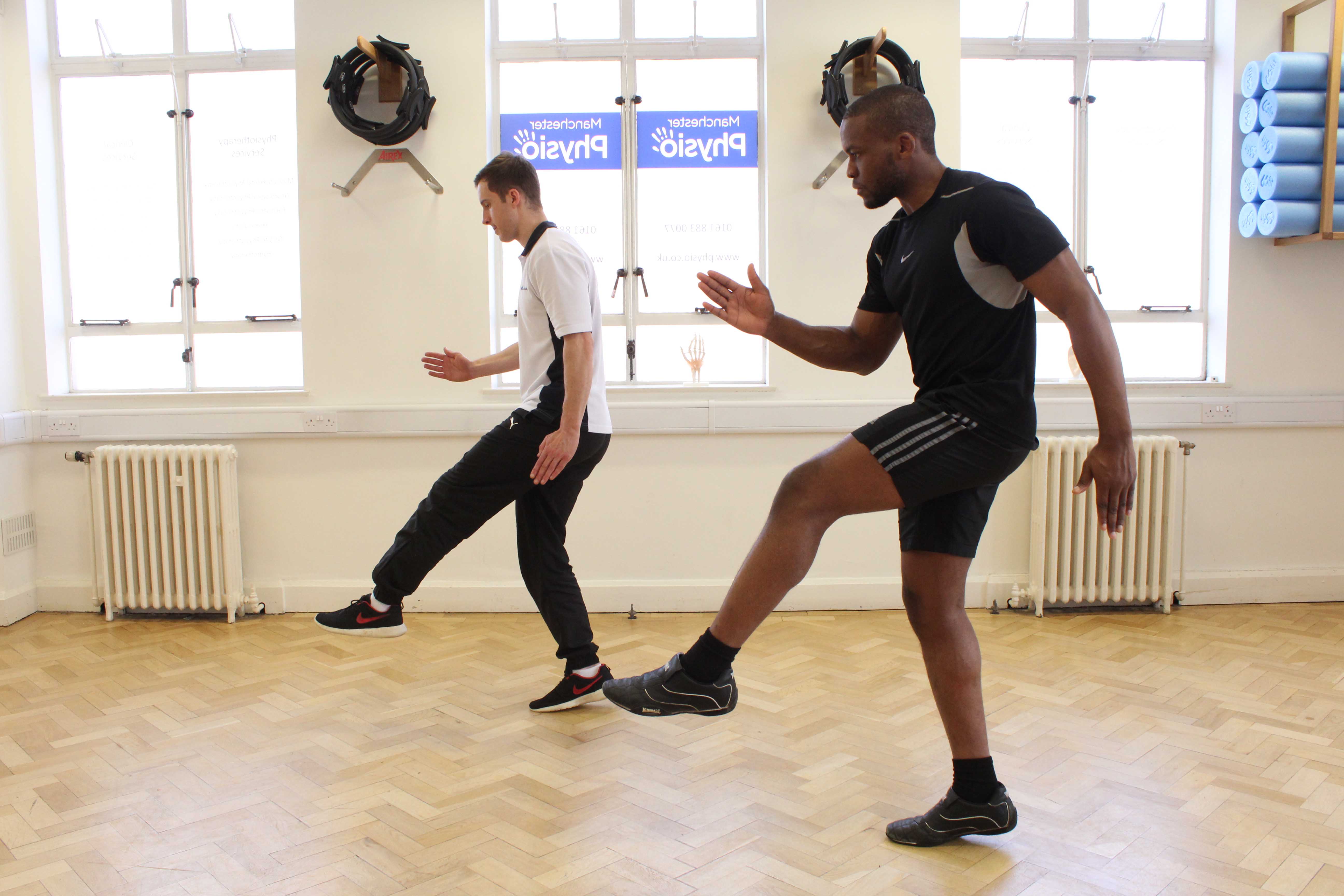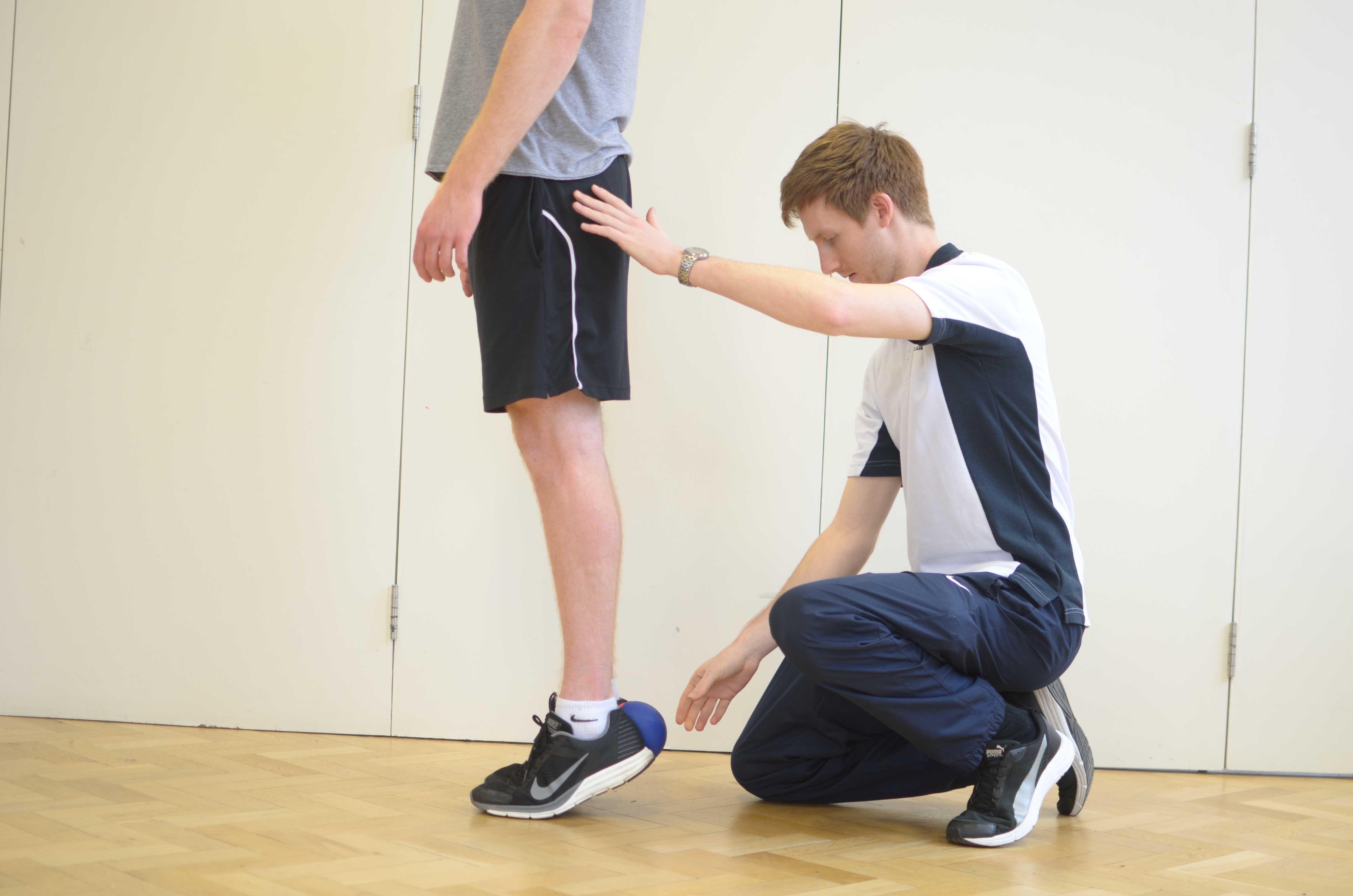What are shin splints?
Shin splints (also known as tenoperiostitis) refers to inflammation occurring where tendons attach to the shin bone. Physiotherapy is an important treatment for shin splints.
 Above: Trigger point massage applied to gastrocnemius muscle by specilaist therapist
Above: Trigger point massage applied to gastrocnemius muscle by specilaist therapistHow do shin splints happen?
Shin splints are caused by overuse. Tendons attach to the shin bone via a layer of connecting tissue that lies over the bone. This tissue is called the periosteum. When muscles contract, they pull on their tendons which, in turn, pull on the periosteum. With overuse, altered biomechanics or muscle tightness, this pulling can damage the periosteum. The body starts to repair this damage by commencing an inflammatory response.
What are the symptoms of shin splints?
Shin splints cause pain on the inside border of the shin bone (tibia). It is usually painful as you begin exercising, however, the pain may subside as you continue to exercise. Following exercise, the pain often returns gradually as inflammation takes place. The area is normally painful to touch and you may feel thickened areas or bands of tissue adjacent to the tibia. Other symptoms of shin splints may include:
What should I do if I have shin splints?
If you suspect that you have shin splints, you should arrange a physiotherapy appointment as soon as possible as it is unlikely that it will get better on its own. In the meantime, you can begin initial treatment yourself. This should consist of icing the inside border of the shin bone using a bag of frozen peas or crushed ice wrapped in a damp cloth for 15–20 minutes.
 Above: Soft tissue massage of the gastrocnemius muscle by an experienced therapist
Above: Soft tissue massage of the gastrocnemius muscle by an experienced therapistWhat shouldn’t I do if I have shin splints?
If you suspect that you have shin splints you should not try to exercise through the pain. This can cause further damage and delay your recovery.
Physiotherapy treatment for shin splints.
Physiotherapy is very important in the treatment of shin splints. Initially, your physiotherapist can confirm your diagnosis and establishing the severity of your injury. From this, an appropriate treatment plan will be developed. This may involve:
Could there be any long-term effects from shin splints?
Shin splints does not produce any long-term effects, if it is accurately diagnosed and treated appropriately. However, if the causes of the problem are not addressed it may reoccur. A chronic case of shin splints can lead to a compartment syndrome.
 Above: Calf strengthening exercises conducted under supervision of specialist MSK physiotherapist
Above: Calf strengthening exercises conducted under supervision of specialist MSK physiotherapist To arrange an assessment with a specialist physiotherapist call Physio.co.uk on 0330 088 7800 or book online.

 0330 088 7800
0330 088 7800


































